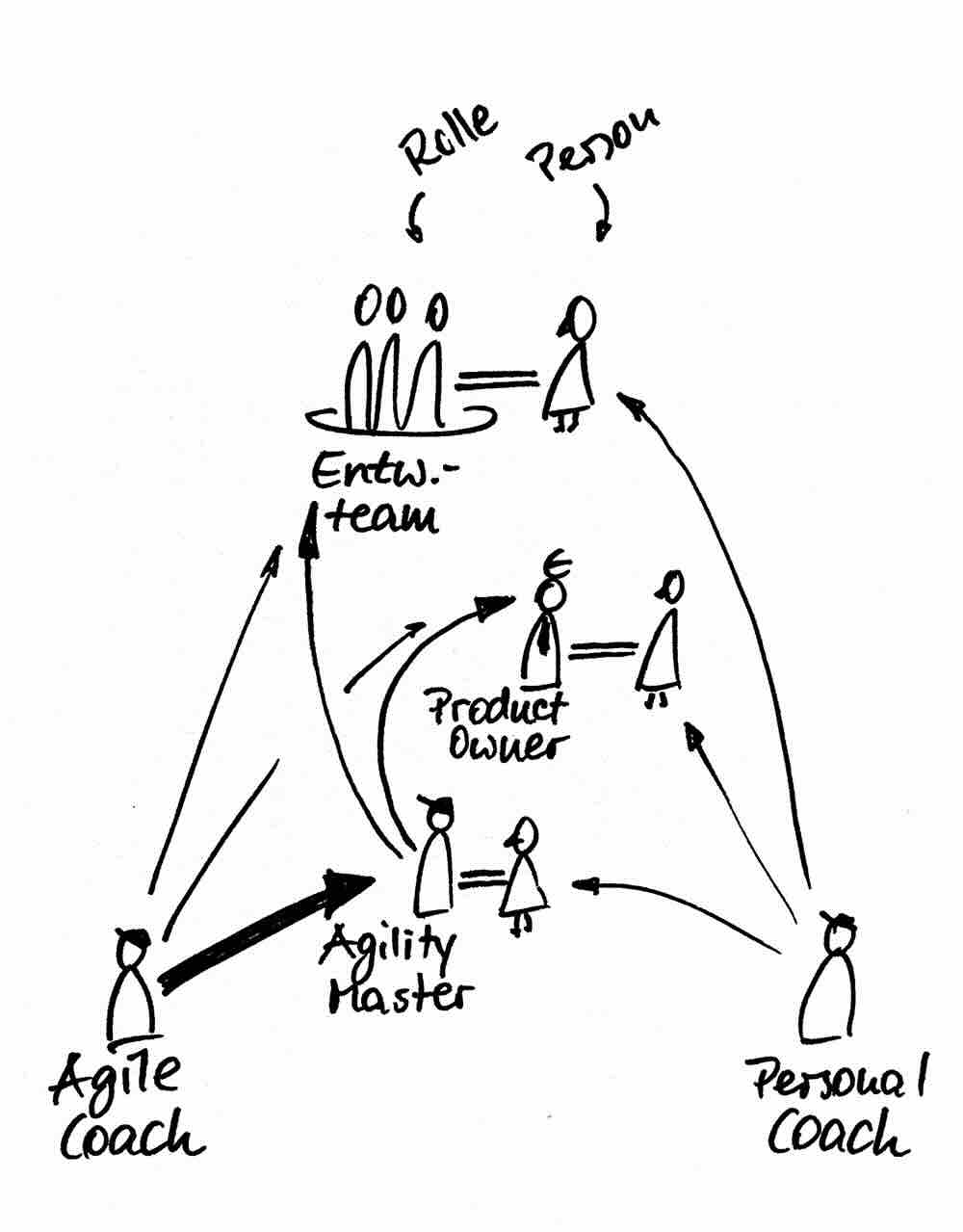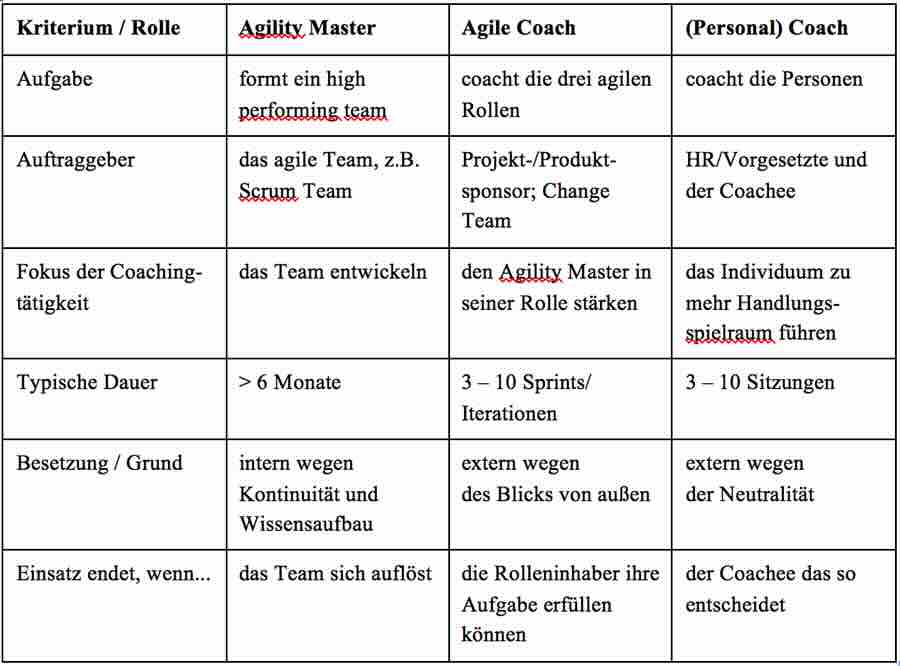Agile teams do a lot of coaching. At least three roles are involved in coaching. Reason enough for me to draw an overview and offer a demarcation of the roles.
I consider these three roles:
- Agility Master
- Agile Coach
- Personal Coach
The role of the Scrum Master is clearly described for the agile Scrum method. It is also used in a similar way in other agile methods for the separation of powers, which is why I am generalizing the role here to Agility Master (1). The Agility Master ensures performance in the team, protects the method, protects the employees and does everything the team needs to be able to work well. In mature teams, they take on the leadership and further development of employees. In the event of conflicts, he works as a team coach and also uses individual coaching sessions as a working tool.
The individual coaching sessions with team members end when the Agility Master is an unsuitable discussion partner due to a lack of neutrality and when their "performance" assignment no longer matches the coachee's development wishes. He is therefore not a neutral third party but remains committed to the project assignment and his partial aspect of leadership responsibility ("ensure that the team works well together"). In contrast to genuine coaching, there is a lack of voluntariness and free negotiation of the coaching content.
The agile coach (2) is a role that is often filled by external consultants and is only temporary, with the task of developing the role holders in the agile team into their roles. Kilby (2013, p. 100) writes: "Put simply, an Agile coach is a trained professional who knows how to implement Agile techniques and disciplines across a variety of industries and circumstances."
The focus is usually on supporting the agility master. This makes sense because the Agility Master performs the function that is critical to success at the start of agile working. The agility master is also the person who supports the other two roles in the team (product/service owner and development team), meaning that they act as a multiplier with regard to the coaching content.
The personal coach (3) works regardless of whether agile working is intended or introduced in the organization. They become active when a coachee or the entire team signs a contract with them. Their focus may be broader than that of a Scrum Master or Agile Coach, as they also work with the coachee on development topics beyond agility if these are important for the coachee.
The diagram above shows the main direction of impact of the coaching work with arrows: The Agility Master works on the team and the Product Owner; the Agile Coach works primarily on the Scrum Master; the (Personal) Coach works less on the agile roles and more on the people behind them and on expanding their scope of action.
The comparison in the table shows the differences in the assignments and focus of the three coaching roles.
So it doesn't matter which of the three coaches I work with as a team member on a particular topic. The topic can be treated differently based on the respective assignment.
Example: I have a problem working with a certain colleague. In my opinion, the quality of his work results is not right and I should continue working with him.
What do the three coaches make of it?
- The Agility Master will look at whether and how this conflict affects team performance. He will work to ensure that we team members get along well enough to complete the stories in the sprint. He may discuss the issue with us individually. This may result in one of us having to jump over our own shadow in order to serve the team's cause.
- The Agile Coach will support the Agility Master in dealing with our conflict. Otherwise, he will ensure that we team members are aware of our role and that we understand how the interplay of the three roles in the team leads to good performance. This can result in the conflict being used as a training ground for the maturation of the team.
- The personal coach will help people to resolve the conflict for themselves in such a way that collaboration and cooperation are possible and can be resolved. The coach focuses on the individual and their self-efficacy. It may also turn out that the conflict is not resolved but circumvented, or that the collaboration is changed or even ended.
So think carefully about which topic you go to whom with...



Comments
Write a comment